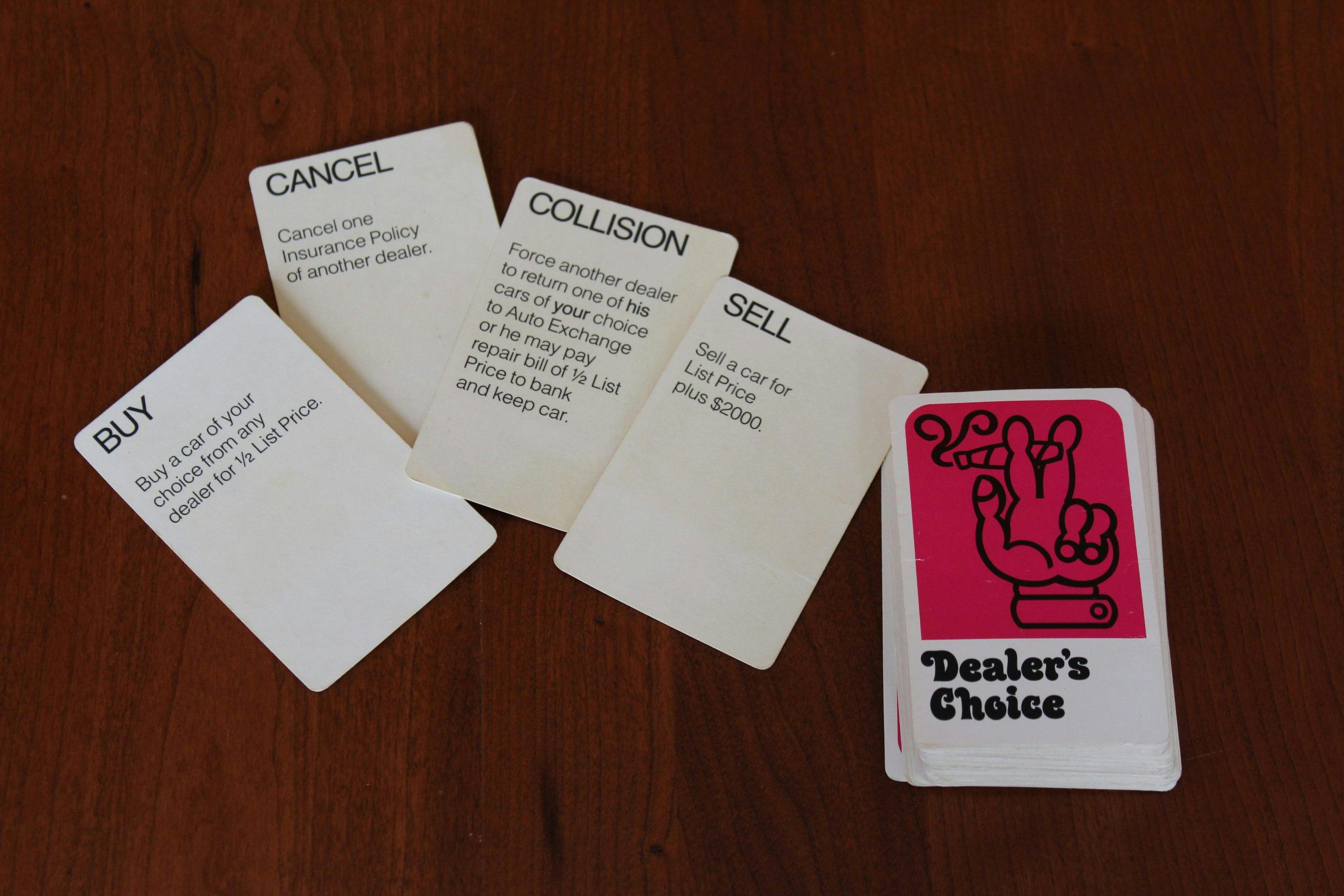Dealer’s Choice: The used-car-sales board game you’ve been missing

If you’re going to play a board game, why not one that pits used-car dealers against each other?
Even as some states have started to allow business to re-open in some fashion, life in the current condition of relative social isolation is boring. Boring enough that some people have resorted to board games. As a car geek, you may have noticed that precious few have an automotive theme. I know of only one, and it’s a game I remembered from my youth: Dealer’s Choice.
My recollection from playing this game back in the day was that Dealer’s Choice did not suffer the cheating that ran rampant in Monopoly, and unlike Risk, it didn’t usually take four hours only to end a physical altercation between players. How would it hold up all these years later? I resolved to find out.
The game is by Parker Brothers and came out in 1972. It’s no longer in production, and my copy was long gone from my parents’ basement (although Monopoly and Risk managed to hang around). However, it’s easy enough to find at America’s infinite garage sale, eBay, so I ordered one up.

Dealer’s Choice arrived in slightly worn but useable condition, sporting super-’70s graphics. Note the main gameboard image of a granny in a Corvette convertible doing a burnout. Yes.
To play Dealer’s Choice, you don’t move around the board—it’s really just a fancy holder for the game cards and money. Players draw cards and buy and sell used cars either from the auto exchange or from each other. The idea is to follow the time-honored dictum of buy low, sell high. What makes that possible is that the cars are worth different amounts to each player, based on the values printed in their blue book. Each car also has a list price.

The list prices range from $2000 to $10,000. Blue-book values can be higher than list price or lower, as low as $0 (“junk”). Pithy notes accompany the valuations (“ash trays full,” “found in six feet of water,” “chauffeur included”). The cars include a smattering of then-new 1971 models (Cadillac Sedan de Ville, Volkswagen Beetle, Jag E-type), some from the ‘50s (an Edsel, a Studebaker Golden Hawk, a Continental Mark II), real oldies (a 1902 Reo, a Stutz Bearcat, a Stanley Steamer), and some oddballs (a Checker cab, a motorcycle and sidecar, a Sherman tank). There are 24 cars in all.
Besides buying and selling cars, players can visit calamities upon each other’s cars, in the forms of theft, fire, and collision. One can buy insurance hoping to protect against such malfeasance, but you don’t know what peril the policy you purchase will guard against or whether it will be worthless fly-by-night insurance. Once the supply of autos is exhausted, the winner is the dealer with the most money.
Fortunately, my home situation just meets the minimum three-player requirement (five is the max). The game isn’t hard to learn, and you definitely don’t need to know anything about cars in order to play. In fact, my car knowledge certainly didn’t help me; I came in last place in our initial run. Dealer’s Choice is not fast-paced but the ability to shaft other players makes it fun, and we’ll definitely play again. The best part? No flagrant cheating and no fisticuffs, even when my ’47 Chrysler Town & Country was attacked by woodpeckers.










